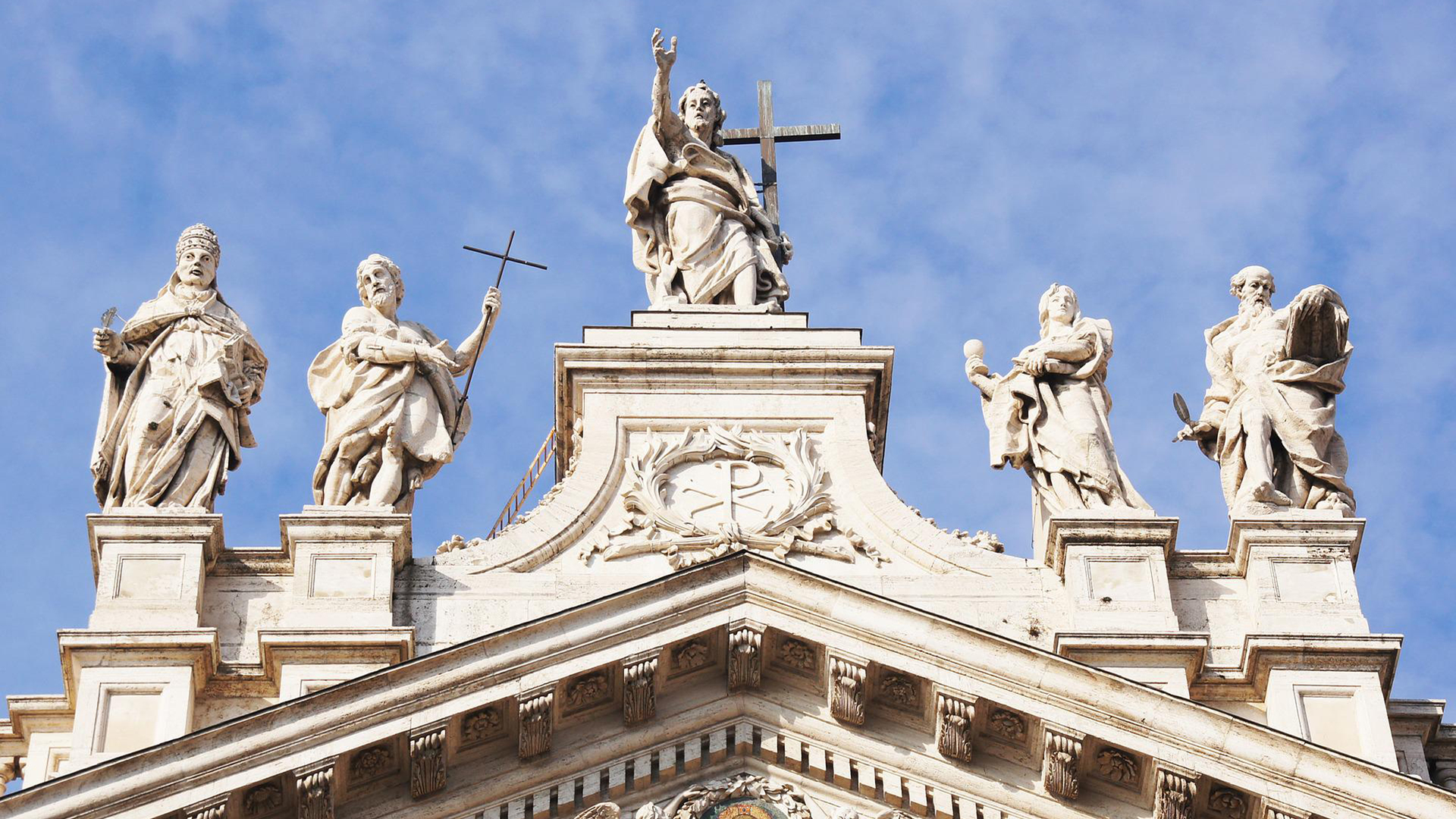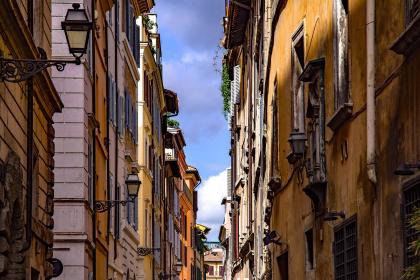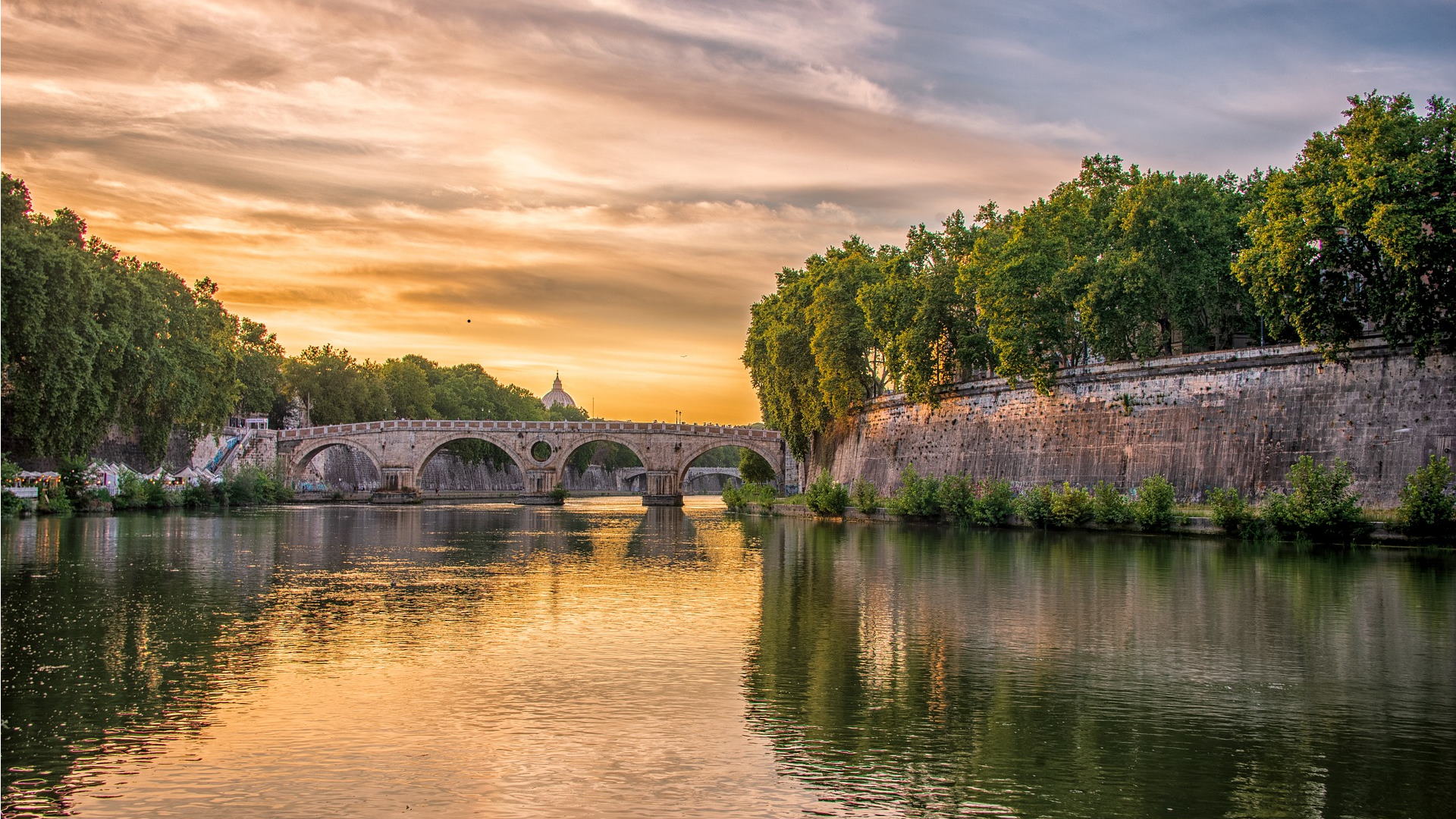You are here
news
Guided routes
CITY SIGHTSEEING ROMA
“City Sightseeing Roma” bus tours takes visitors on a journey through the Eternal City’s history. On the double-decker open bus, painted in traditional red, City Sightseeing ©, comfortably seated tourists are able to admire the splendours of the city’s churches, monuments, palazzo, piazzas and the streets of Imperial Rome, Christian Rome, Baroque Rome and Contemporary Rome. Web site
GRAY LINE I LOVE ROME
Tours discovering Rome’s main sites Website
GREEN LINE TOURS
All aboard a double-decker bus for an all-embracing tour of the splendours of Rome. Sit back and enjoy a trip to the Eternal City’s main cultural and historical sites. Web site
ROMACRISTIANA - O.R.P.
A non-stop panoramic tour with Open Bus Roma Cristiana. Website
ROME OPEN TOUR
A splendid panoramic view of the city from the top of a double-decker tourist bus. The service offers the possibility of visiting Rome from the confort of sitting on the bus or use the “Hop-on/Hop-off” formula that allows you to reach quickly all the wonders of the eternal city.Multilingual commentary accompanies tourists during the tour.The exclusive Bus&Boat formula allows to purchase a combined ticket for both “ Rome Open Tour” and “Battelli di Roma” for a full experience in the heart of Rome.Ticket may be purchased on line , on board Rome Open Tour Busses or at any of the local authorized resellers. Website




Mussolini’s Air Raid Shelter
Location
Saint John and the Night of the Witches
The legends and traditions of the night between 23 and 24 June
Until the end of the 19th century, one of the main religious and profane holidays was St. John’s, that of the patron saint of the city, on 24 June. The holiday began the night before, on the so-called “night of the witches.” According to a legend, witches were summoned to the Lateran meadows by the ghosts of Herodias and her daughter Salome, damned for causing the beheading of the saint: they used to go around the city to capture souls before continuing to Benevento, the so-called City of Witches. It was, therefore, essential to resort to magical rituals and all kinds of exorcisms.
After blessing their beds and the front doors, people scattered about Rome by lantern and torch light: when they arrived on the square, they lit bonfires to drive away the occult forces, they prayed and eat snails in inns and shacks. Some families even brought the snails from home, in a “callaro”, or a huge saucepan, full of snails with sauce. Eating snails, whose head horns or tentacles represented discord and distress, was tantamount to defeating adversity.
On this magical night, garlic and dew also played a key role. Tradition has it that St. John’s dew had healing powers while, according to a saying, “If you don’t not buy garlic on St. John's, you will be poor all year round”. During the night the Tiber baths were also opened to the public and the inhabitants of the city could bathe in the fountain of San Giovanni: it was believed that during the day of his feast the saint would give more miracles than the rest of the year.
The people used to turn out in droves, eating and drinking to their fill and mainly making a din with their horns, trumpets, bells, tambourines and firecrackers of every shape and size so as to scare and ward off the witches, preventing them from gathering the herbs essential to concoct their spells. The feast drew to a close at dawn when the Pope arrived at San Giovanni in Laterano to celebrate mass, after which he threw from the cathedral’s loggia gold and silver coins, much to the delight of the frenzied crowds below.
Today, sadly, the traditional feast of Saint John has lost all of its early importance, although it has to some extent recently been revived with the organisation of a number of events.

Janiculum Hill
Location
Meta sudans
Location
Quartiere Coppedè
Location
The “Roman Ottobrata”
“Che splendida ottobrata” - What a wonderful October!
Visitors arriving in Rome at the beginning of autumn will certainly happen to hear this strange expression, quite familiar to Romans. Yes, because October, for Rome, is a magical month, almost a second summer, with bright days and an extremely mild climate. Thanks to the balmy, sunny days and to the softer autumn light, in this period the city seems to give its best enchanting Romans and travelers alike. But October, as we know, also brings with it the colors and aromas of wine: and wine is precisely the other essential ingredient of what were once the famous “Roman Ottobrata” day trip.
The history of the Ottobrata
The Ottobrata was a traditional custom that, according to some historians, would descend from the Bacchanalia feasts of the ancient Romans, which were related to the cycle of the seasons and honored Bacchus, the Greco-Roman god of wine. Until the early 20th century, Romans used to celebrate the end of grape harvest for wine by indulging in some small excess. Thus in the month of October, on Sunday or Thursday morning, it was normal to see small groups of people departing from the city districts and heading “out of town”, beyond the city gates. The outdoor escapes joined nobles and common people and had as their destinations the vast countryside, orchards and vineyards that once surrounded the city, for example the meadows after the Milvian Bridge, the vineyards between Monteverde and Porta San Pancrazio or outside Porta San Giovanni and Porta Pia. One of the favorite destinations, however, was Mount Testaccio with its famous “wine catacombs” that were built along its slopes in the 17th century: the caves provided the ideal temperature to best preserve what was the real protagonist of the feast.
Wine, songs and eggshell-shaped carts
Those who could afford it, travelled by a “carettella”, a typical eggshell-shaped carriages pulled by two horses, harnessed and adorned with rattles and cowbells. As chronicles, prints and engravings of the time show, inside the cart there were seven or nine girls, dressed up and with hats covered with flowers and feathers: the girl sitting next to the carter was the “Bellona”, the others were simply the “Minenti”. Men, relatives and friends followed the cart on foot, singing, playing and dancing. The festive outings also attracted the attention of illustrious foreign travelers, philosophers, observers and onlookers of the time. Giacomo Casanova, for example, wrote he had a beautiful day, with just one drawback: the journey from Rome to Testaccio, the destination of his Ottobrata, was too short and the time he had spent in the cart with his women was not enough.
Having fun is serious business
Outings were intended for “pure” fun: it was a city feast lasting a whole month, with lots of food such as gnocchi, lamb and tripe, and above all lots of wine. People would play games such as bocce and ruzzola using wooden wheels, and they would dance saltarello – the traditional dance of the Rome of the gone times – to the sounds of drums, guitars & castanets. The tradition was taken very seriously and, including clothing, food and transportation, taking part in an Ottobrata day trip costed a lot. So, in order not to disfigure, someone even resorted to the Monte dei Pegni pawnbroker. A burlesque chronicle from 1860 reports that once a wife and husband brought each other’s clothes to the Monte. A woman went so far as to pawn the bed: her husband always came home drunk and would not have noticed it... For those less fortunate, all that remained was to take advantage of the Roman villas opened for the occasion by their owners, for example Villa Borghese, where the princes set up spaces for games and songs. And which still today is one of the best places to enjoy Rome’s beauty in autumn.
Wine drinking culture in Rome

Traditional cuisine

A city within a city: the rioni of Roma

Origin, history and fascinating facts about the ancient districts of Rome

Reading Rome
“Roma non basta una vita” per conoscerla appieno
A famous book by Silvio Negro bears a title that couldn’t be more accurate: “Roma non basta una vita” (“A lifetime is not enough for Rome”).
A lifetime is not enough to fully get to know Rome, or to read even a small percentage of the books dedicated to this city. But no need to be discouraged; it’s true that there are many people writing and you’re just one person reading, but there’s always somewhere to start.
Our bibliographic itinerary, personalized as with all itineraries, is like having an enjoyable, but not at all rudimentary, little handbook.
Stendhal and Goethe: two foreigners who loved this city, without hiding its flaws. Their travel guides – two books full of sentimental anthropology – are a good place to start, needless to say. So happy reading with Promenades dans Rome from the French author and Italian Journey from the German.
Another work providing a brief orientation on travelers who have visited Rome, either loving it to death or hating it, can be found in poet Valerio Magrelli’s Magic and Poisonous.
Rome in the words of foreign writers. Pier Paolo Pasolini and Carlo Emilio Gadda are two “classic” writers from the 1900s. With very different approaches to character and style, vitalism and reluctance, these two non-Romans gave us some of the highest-quality literary accounts focusing on Rome. Gadda’s novel Quer pasticiaccio brutto de via Merulana (That Awful Mess on Via Merulana) is an intellectual challenge for the reader; the over-the-top semantics and complex plot can be discouraging. But don’t give up! – once you’re done reading you’ll take great pleasure in discovering the unforgettable petite bourgeoisie of Rome in the ’50s. In 1959, director Pietro Germi used this book as the basis for his film Un maledetto imbroglio (The Facts of Murder). Definitely worth a look through the film archives. The Rome portrayed by Pier Palo Pasolini is the painful city of the working-class suburbs. The urban life created by disorderly economic growth turns the traditional culture and way of life upside down, without replacing them with new opportunities to build a united front. The past is forgotten, erased from people’s memories, yet there is no future either. Must-reads: Ragazzi di vita and Una vita violenta.
Roman writer Marco Lodoli published two short “vagabond guides” on Rome: Isole and Nuove Isole. These are guides for disorganized, compulsive wonderers. The city is to be enjoyed with no particular destination in mind – pick up and go. An age-old and completely wonderful way to discover Rome. And that’s the end of our reading advice for now. Next time we’ll look at some good picks with a historical or artistic spin.
Alberto Angela, a scientific popularizer, author, and conductor of many interesting television programs, takes us back in time among the crowds in the streets, inside the houses or in the Colosseum, during gladiator fights, to spend A day in the life of ancient Rome.
In The Reach of Rome, instead, we set off on a journey through the Roman Empire, following a simple sestertius and the people who gradually came into possession of it. We will discover their faces, their feelings, their way of life, their habits, their homes. And step by step, discovering the behind the scenes of the Empire, we will realize how much the world of the Romans, the first great globalization in history, looked like ours.
The secrets of Rome. Stories, places, and characters of a Capital, by the journalist and TV presenter Corrado Augias, offers us a great portrait of Rome, full of surprises and news, and reveals the secret face of the Capital and the stories that have contributed to making it unique and immortal. An interpretation of the only ancient city that for 27 centuries continues to be the protagonist of history.
S.P.Q.R. by Valerio Massimo Manfredi, historian, and archaeologist, tells the 1200 years of Rome's dominion over the world. The three compelling novels that are part of it - Ides of March, The Empire of Dragons and The Last Legion - drag us on a long journey back in time, to retrace the significant moments of our past such as the assassination of Caesar and the passage from antiquity to the Middle Ages.
Happy reading to all!













































